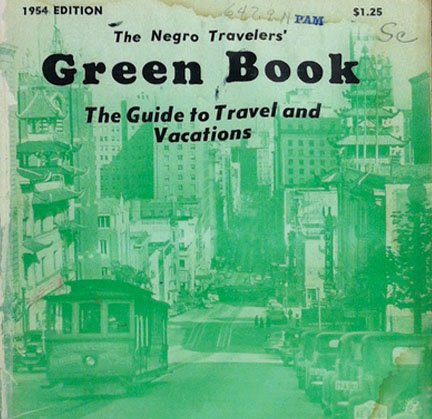In 1948, if you were African American and traveling, you were most likely in possession of the Green Book. Officially The Negro Motorist Green-Book, the book was first published in 1936 as a guide for African Americans with advice on safe places to sleep and eat while traveling through Jim Crow-era United States. Created and compiled by Harlem postman Victor Green, it was published for nearly three decades. As its popularity grew, the book expanded from a motorists’ companion that pointed African American travelers to restaurants, lodging, car repair establishments and other businesses that would serve them, into an international travel guide, with information on airline and cruise ship journeys.
During its most popular years, the Green Book sold more than 15,000 copies a year to black business travelers and vacationers. It offered travel tips and feature articles on cities. Its publication in 1954 encouraged readers to visit San Francisco, described as “fast becoming the focal point of the Negroes’ future.” It avoided discussing racism, approaching the topic subtly, “the White traveler has had no difficulty in getting accommodations, but with the Negro it has been different.” During the 1960s, the book championed the achievements of the civil rights movement. The author, Victor Green, even expressed within the book, his hope that someday publication would be suspended because it was no longer needed.
On March 9th, Tryon Palace welcomes the opening of Navigating Jim Crow: The Green Book and Oasis Spaces in North Carolina, a pop-up panel exhibit made possible by the Institute of Museum and Library Services. The exhibit was created by The North Carolina African American Heritage Commission (AAHC), a division of the N.C. Department of Natural and Cultural Resources (DNCR). It showcases images of business owners, travelers, and North Carolina sites, along with oral history quotes and memories from African American travelers and descendants of Green Book site owners.

At one point, the Green Book listed more than 300 businesses in North Carolina as “safe oases” for African Americans – from restaurants and hotels, to tourist homes, nightclubs and beauty salons. However, listings in the City of New Bern were few. In the 1940’s, Palm Garden, a tavern located on Broad St., was listed till 1950. Still standing, the two-story brick Rhone Hotel located at 512 Queen Street, is officially marked as being listed in the Green Book. A second accommodation, the H. C. Sparrow Tourist Home, ca. 1925, at 731 West Street, was listed in the 1960s.
Navigating Jim Crow: The Green Book and Oasis Spaces in North Carolina is offered free to the public from March 9th through May 2nd, within Mattocks Hall at the North Carolina History Center, 529 S. Front Street, during regular business hours. The Green Book exhibit offers just another reason to come and visit Tryon Palace and the History Center today.
By Nancy J. Figiel, Director of Public Affairs, Tryon Palace
Tryon Palace • 529 South Front Street • New Bern, NC 28562 • 252-639-3500 • www.tryonpalace.org

